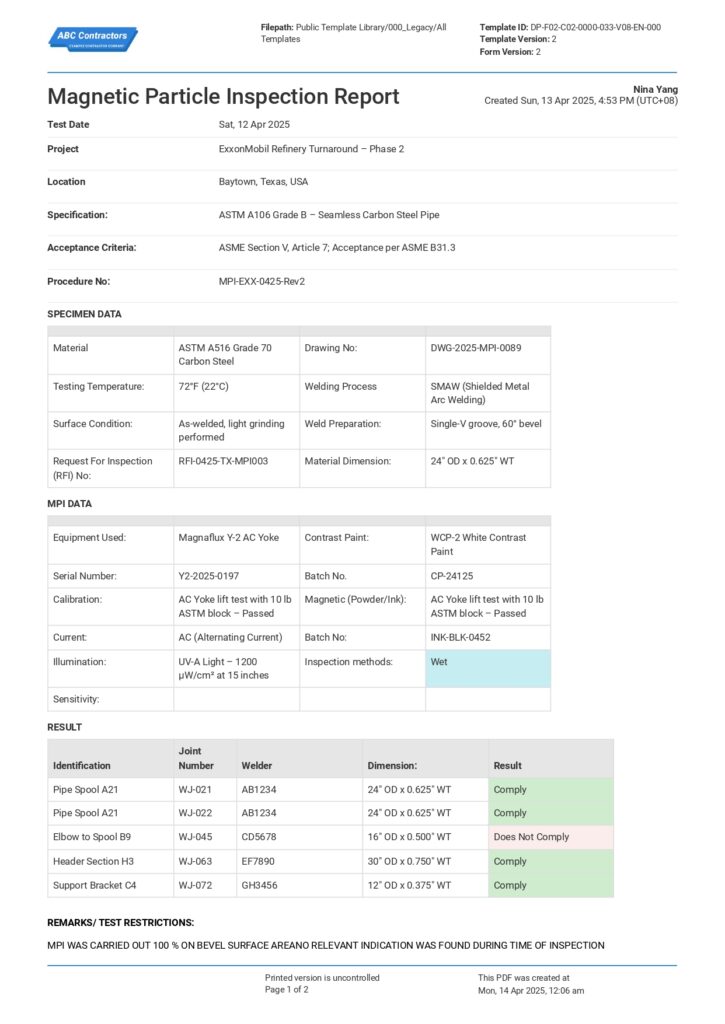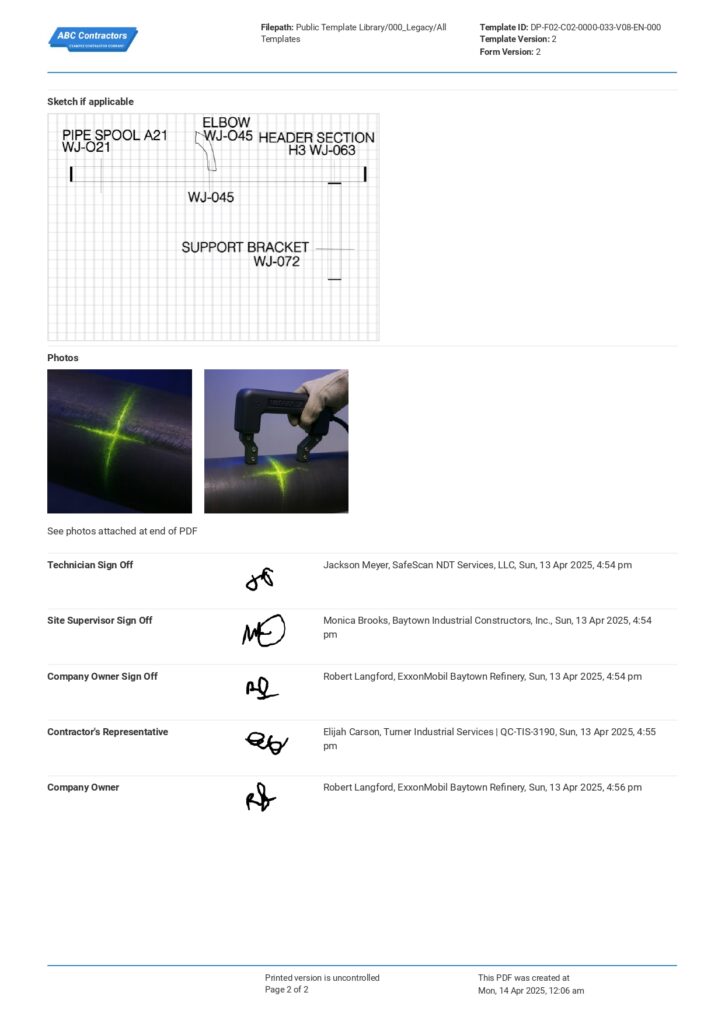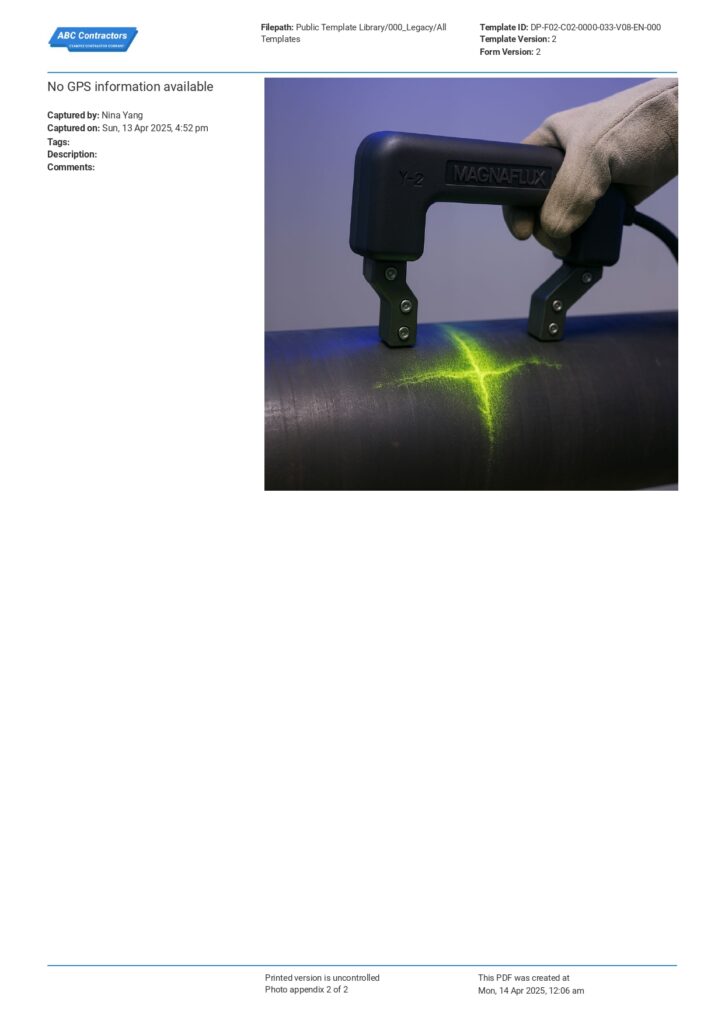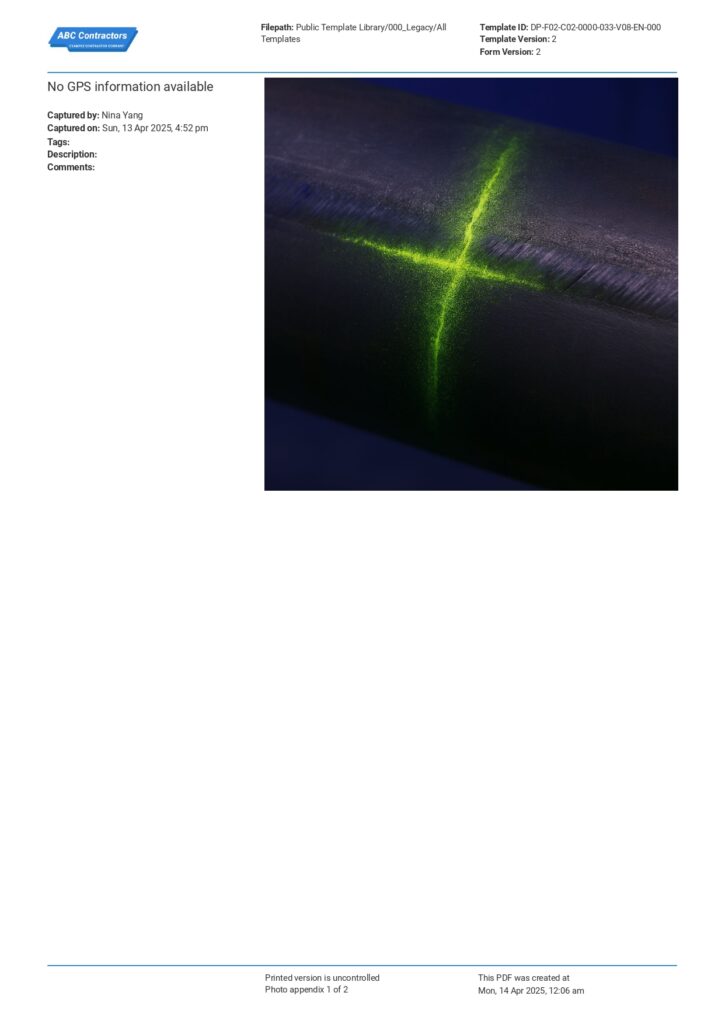Magnetic Particle Inspection Report Template and sample PDF
Start with a free 30-day trial. No credit card required.
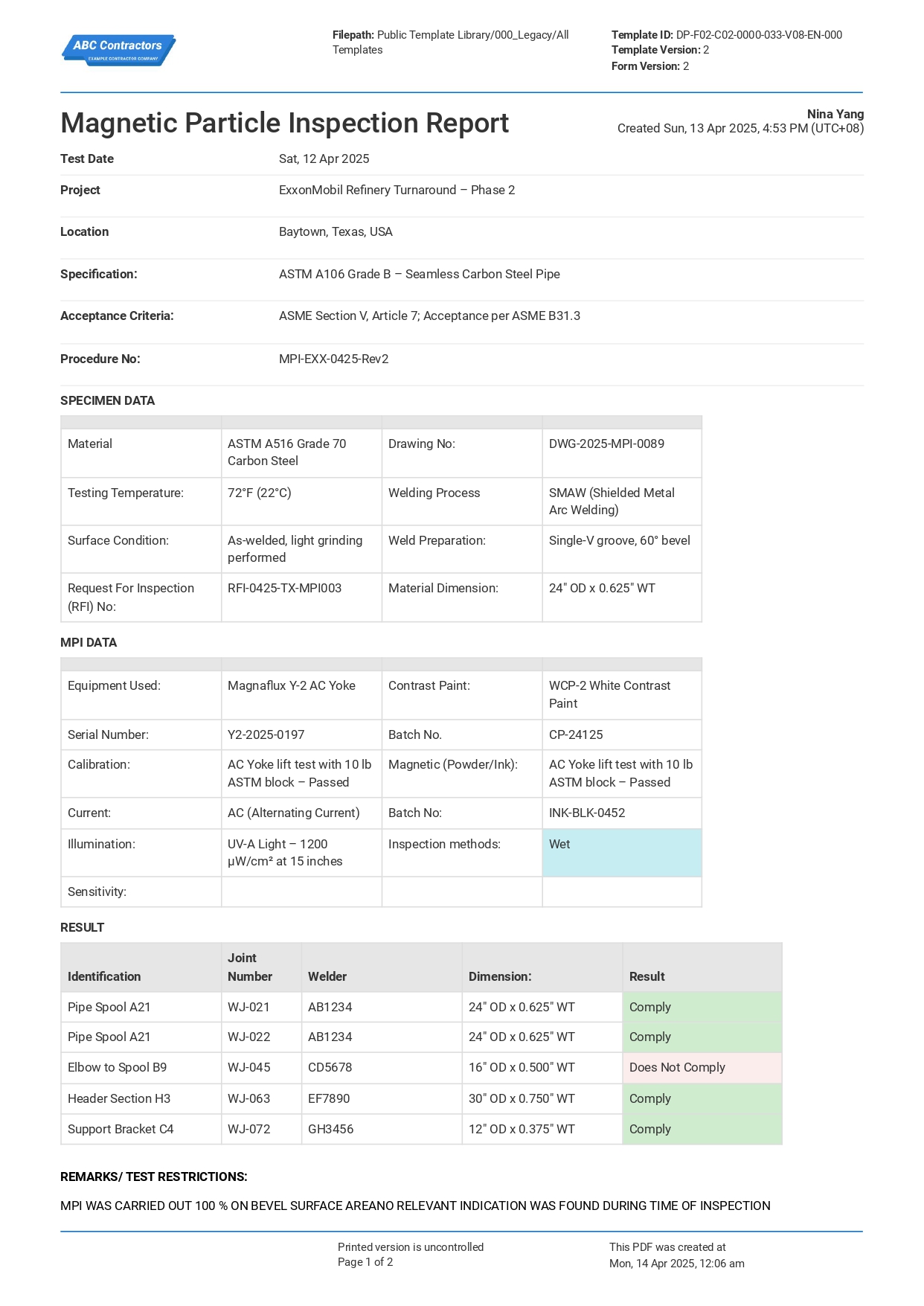
~10,000 employees
~500 employees
~25,000 employees
~20 employees
~50 employees
~1,500 employees
~20 employees
What is Magnetic Particle Inspection Report?
A Magnetic Particle Inspection Report is a formal documentation of the Magnetic Particle Inspection (MPI) results. MPI is a non-destructive testing technique primarily used to detect surface-breaking cracks in ferromagnetic materials found in critical components such as actuators, motors, and sensors used in industries like electronics manufacturing, automotive, and similar applications. The component is exposed to magnetism and coated with small magnetic particles; a surface crack is revealed as it creates a flux leakage with a visible indication. In the MPI report, it is essential that the documentation is comprehensive and uncomplicated, including important details such as the specimen, equipment, inspection method, and evaluation results to indicate whether the part is compliant or not.
Compare this digital Report to paper-based forms made from Word Docs, Excel
Use this Magnetic Particle Inspection Report template for free.
What is the typical magnetic particle inspection procedure?
Magnetic particle inspection is one of the major and oldest non-destructive testing methods that focuses primarily on surface-level inspections. Just like most noninvasive surface-level inspections, it’s quick and low-cost. While it does not give information on the defect depth and cannot cover complex geometrical shapes, it still does the job of sensing discontinuity in the surface of parts. How is it done and what are the procedures involved?
Preparation and Magnetization
This process involves preparing the component to be inspected, making sure it’s cleaned and dried of grease and oil, and preparing the materials needed, which include the specific magnetic powder and yoke.
Magnetic powders are key ingredients in magnetic particle inspection as it will trigger the detection of the surface defects.
There are three powders to choose from depending on their visibility and application.
• Dry magnetic particles - which are usually red, black, or yellow in color. These are fine dry and visible in natural light and is usually used for field welds and rough surfaces.
• Wet magnetic particles - these are suspended in oil or water and is more sensitive than dry powders but makes is easier to apply to a large area.
• Wet fluorescent particle - these are coated with pigments of hat fluoresce when exposed to ultraviolet light. The particles used with the wet method are smaller in size than those used in the dry method. (Iowa State University, Center for Nondestructive Testing)
Yokes are portable U-shape electromagnetic devices that would provide the necessary magnetic field that would visualize the imperfections. It’s a key inspection device to prepare to detect surface and sub-surface cracking.
Application of the magnetic particles
Basically, if there is a defect or crack in the surface of the component, the magnetic particle senses the discontinuity and is drawn to it. This then changes the permeability of the material, and when the specimen or the test piece is magnetized, the magnetic field is distorted. After this, the inspector has to visually inspect the component under appropriate lighting. Surface fluorescent particles are visible under UV light.
An example here from the data of the magnetic particle inspection report you can preview above: a weld pipe is inspected using the wet fluorescent method. After degreasing the pipe, a yoke is placed across the weld seam to magnetize the area. Then, a fluorescent magnetic ink is sprayed onto the surface. Under the UV light, any surface-breaking crack will create a glowing indication which would be easy to detect by the inspector, and it highlights the location, shape and extent of the defect.
Magnetic particle inspection report
The last essential procedure of this testing method is the magnetic particle inspection report. This is when the findings are documented, with photos or sketches of the indications of the defect.
What should be included in a magnetic particle inspection report format?
Given that it is an essential procedure in magnetic particle inspection, there are two important considerations in a magnetic particle inspection report format: first, that it should have the key sections; and second, that it should align with compliance and industry standards such as ASME, ASTM, and ISO. For the key sections, it should include the following:
• General Information - This section includes the essential information about the test such as, location, acceptance criteria and details of the observation, and procedure. This is important for traceability and reference for the procedure.
• Specimen Data - This contains the details about the specimen being inspected, which includes the type of material (usually this is the grade or alloy composition for example ASTM A516 Grade 70 Carbon Steel, grade 70 here means minimum yield strength), its dimension and preparation process.
• Magnetic Particle Inspection (MPI) Data - This section specifies the the equipment used, serial number, and the magnetic material used during the inspection.
• Results - This is the most critical section as it shows whether or not the inspected material complies or not to the standard. It serves as the basis for next action and recommendation and would determine if the part is non-compliant and cannot proceed.
There is no mandated format set for how the report should be structured, however it’s necessary for an MPI report to be high quality, easily traceable and can demonstrate the trustworthiness of the results.
With this, it would add value for a non-destructive testing groups to have a quality management software that allows you to easily create a smart document—easy to trace, review, and approve. It significantly improves your company’s reliability as a business, improves team collaboration, and, more importantly, lets you get the data right away, as quickly as the surface inspection you conduct magnetic particle inspection.
Advancements in Magnetic Particle Inspection
With growing demand for safe, reliable, and quality inspections, there have been recent advancements in magnetic particle inspection as well as other non-destructive testing methods. While MPI's usage is lower compared to ultrasonic and eddy-current testing, innovations and research centered on improving detection and documentation are on the rise and receiving more focus.
These advancements significantly improve reliability and defect detection. Notable advancements in MPI include:
AI-enhanced and automated NDT techniques to reduce human error
The nature of NDT techniques is that they use methods other than destroying the material being inspected to identify surface-level discontinuities, and they usually rely on the expert inspector for manual visual inspection and evaluation of results. As there are rising breakthroughs in artificial intelligence, defect identification in magnetic particle inspection is being studied to enable enhanced and more accurate detection through image data and registration. The goal is to remove manual determination of crack defects, reducing errors caused by differences in personal judgment and refining recognition. (Automation in Construction, 2025)
Upgraded MPI materials
There are upgrades being done with the materials used for magnetic particle inspection procedures. For instance, UV LEDs are being used to increase visibility, provide better illumination, and are a considerably more efficient alternative to traditional lamps. There are also developments with magnetic particles and carriers to detect a wider range of surface and near-surface defects in ferromagnetic materials.
Software solutions for Magnetic Particle Inspection reports
Aside from process improvements in terms of detection, there are also material advancements to increase visibility and reliability. Software solutions are also emerging in inspection reports. Tools like Dashpivot are quality management software, where you can easily build a template designed from your old paper-based forms and still align with industry standards. It also helps with traceability and auditing, as it makes it easy to access and trace old magnetic inspection reports.
Finally, whether you’re inside a vessel or in the middle of preventive maintenance for your equipment, having an on-the-go smart report maker would significantly help your work. It’s one of the advancements in the field of non-destructive testing that not only helps the inspector but also delivers great value to the company.
Frequently Asked Questions
Why is this the best inspection report template?
Sitemate's Magnetic Inspection Report Template is the best inspection report template because it is already proven by thousands of multiple industry companies. It comes pre-built to align with inspection report best practice, and is quick and easy to use for any type of worker.
Is this template compliant with ASTM and ASME standards?
Yes - this template can be configured to align with ASTM E709 and ASME Section V in Australia, the UK, New Zealand, and other regions. It's already used by certified contractors that conducts Non-Destructive Testing to either get or maintain certification status.
Can I edit this MPI report for my company use?
Yes - the template is completely editable with easy drag-and-drop functionality. You can create thousands of potential document setups using different field types including tables, formulas, sketches, photos and more, to cater to any type of data capture, as well as add your company logo, custom headers and other important structure. All of this configuration is powered by Dashpivot's template builder.
What formats is this report available in?
This template can be used across all devices - computer, mobile and tablet. This means you can edit and fill out forms on your computer, or access and complete reports directly from the field. Once filled out, any record in the system can be geneerated or exported as PDF or CSV, meaning you get the best of Word Doc, PDF and Excel, with the power of modern software.
Other popular templates you can use and edit for free
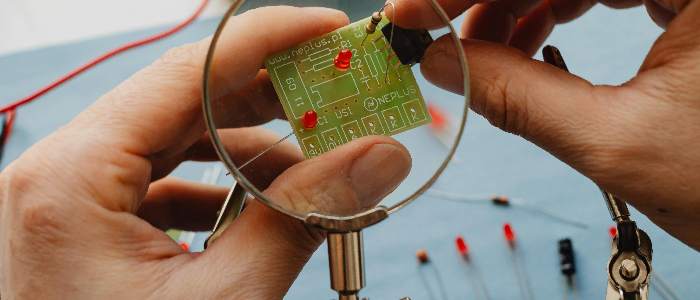
Visual Inspection Checklist
Review non-compliance easily with this smart checklist that enables a smoother review and approval process.

Liquid Penetrant Inspection Report
Enjoy hassle-free report generation with features like drag-and-drop fields and the ability to add sketches and images.

Defect Report Template
A structured, convenient, and easy-to-record report that helps you track and monitor defects.
This smart report was generated with Dashpivot software
Level-up your report generation and tracking with an on-the-go template builder and tracker to improve workflow management and data-driven decision making.
- Access, edit and complete Magnetic Particle Inspection Report from any device - mobile, tablet or computer.
- Print, download or send your inspection reports as perfectly formatted PDF documents with your company logo.
- Save and secure your reports online securely online, where they can be searched and found instantly
- Invite internal and external parties to see, edit and sign off on reports online.
Sitemate builds best-in-class software tools for built world companies.
